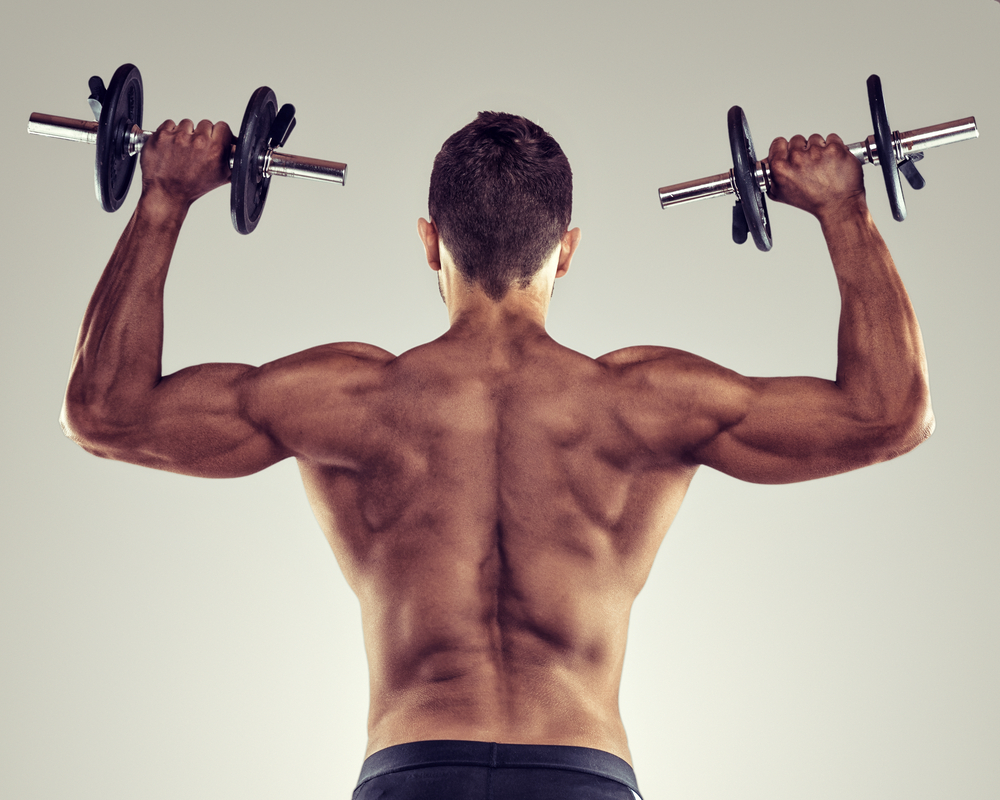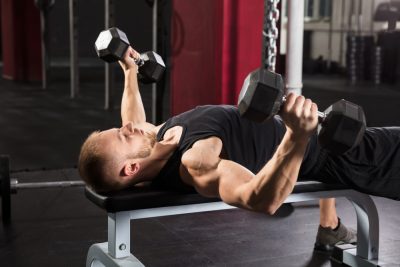The dumbbell fly is an exercise that targets your upper body, particularly strengthening the shoulders and chest. The typical way of performing this exercise is to carry out the movement while lying on your back on an incline or flat bench. You can also opt to perform the standing variation.
Tips to master the dumbbell fly
You should perform this exercise with perfect form and nothing less as it is an easy and effective movement that can help with the progression to other exercises if performed correctly. These are some tips to take note of if you are looking to get big gains with the dumbbell fly;
-
Do not stop squeezing your shoulder blades
Begin each of the sets by driving your shoulder blades into your workout bench, then as you lower the weights, think about squeezing them. You do this to protect your shoulders. Continue squeezing your shoulder blades together even as you start to fly up. Firstly, what this does is to offer more protection to your shoulders as the joint space in the shoulder is easy to compromise while performing the movement, which would give the rotator cuff tendons a smaller space for movement. You maintain this when you squeeze your shoulder blades.
What’s more, is that you would also challenge your chest to squeeze harder at the top of the movement if you continue to squeeze your shoulder blades. You will recruit the whole shoulder complex when you get to the top of each rep if you release your shoulder blades. While your shoulder blades remain tight and keep the shoulders down if you are actively squeezing hard on the rhomboid.
-
Do not lower too deep
At the top is where the major focus of the dumbbell fly is, and not at the bottom. Do not lower your shoulders too deep in an attempt to overstretch your pecs. Try to get your upper arms parallel to the floor, and you don’t have to be concerned about going too deep with them. This exercise is not meant to improve your flexibility; rather, it helps you build strength, definition, and size. Not everyone has the ideal shoulder range of motion. So, stop lowering the dumbbells when you experience a little stretch in your chest. An indicator that you are over-stretching is if you feel this stretch in your biceps or shoulders. The ideal starting point is where you lower your upper arms until they are parallel to the floor or about some degrees deeper.
-
Squeeze at the top
When you will get the true benefit of the dumbbell fly is when you bring your hands together and not when they are at their widest. This is the point where you will have the opportunity to squeeze your pectoral fibers, which would improve the growth of your chest. Try to keep your focus on the squeeze, and then linger at the top for about one second to get the most gains from the dumbbell fly.
Also, when you are at the top, ensure that you do not touch the dumbbells, as this would eliminate the chance for you to squeeze your pecs. Another thing to note is that you should take your time while doing each rep as if you drive the dumbbells up too fast, you would be performing the movement without the control and precision needed to get that optimal chest squeeze.
- Ensure that your back is kept flat on the bench and do not arch it at all when you get to the bottom of the rep. You will lessen the tension on your chest and decrease the range of motion even if you arch your back just a bit.
Benefits of the dumbbell fly
Convenience and versatility
The efficacy of the dumbbell fly has increased in your weight-training program thanks to its versatility. Traditionally, it is an exercise that is performed on a flat bench, but you can add a variety to your workout by using a decline or incline bench. While doing the traditional or decline dumbbell fly, the target muscle remains the same. However, if you work your pecs on a decline bench, you can make the variation more challenging. You can also perform the dumbbell fly from the convenience of your home as it requires minimal equipment.
Improves your health
The dumbbell fly, just like other strength-training exercises, is beneficial to health in various ways. When you perform the exercise, in addition to strengthening your muscles, it also makes for healthier ligaments, joints, and bones. Strength-training exercises also provide you with other benefits like avoiding health problems like arthritis, building a higher metabolism to promote fat loss, and improving posture and stamina. When your chest muscles are strong, you will find it easier to perform a significant part of your everyday tasks like opening the car door or pushing a lawnmower. Due to the stronger physical appearance that comes with strengthening your upper body, you will have improved confidence also.
Provides better activation than pushups
One advantage of incorporating the dumbbell fly into your exercise program is that it can generate more muscle activity in your pectoral muscles than you get with pushups. Research has shown that when you perform the incline variation of the dumbbell fly, it can generate more muscle activity than stability ball pushups and standard pushups. When you utilize an incline bench to perform the dumbbell fly, the clavicular heads of your pectoralis major muscles become the target muscle.
Strengthen several muscles simultaneously

The major aim of performing the dumbbell fly is to strengthen the muscles in the upper body. It has been found to primarily target the sternal heads of your pectoralis major muscles, which are located in the chest. In addition to that, it also strengthens your brachialis muscles, wrist flexors, triceps, biceps, and deltoids. Due to its ability to activate several muscles at once, the dumbbell fly is a beneficial exercise to add to your exercise program.
How to perform the dumbbell fly
Just as stated before, you can perform the dumbbell fly with minimal equipment. Start with lighter weights of about 3 to 5 pounds if you are a beginner, and you are still getting used to the movement. Consider using weights of about 8 to 10 pounds if you are advanced at upper body exercises.
These are steps to perform the different variations of the dumbbell fly;
Dumbbell chest fly
This is the traditional variation of the dumbbell chest fly, and it is done on a flat bench and with a set of 2 dumbbells.
- Lie with your back flat on a flat bench. Then ensure that each foot is placed on both sides of the bench. Throughout the movement, ensure your back and head are firmly pressed into the bench.
- Then grab the two dumbbells and hold one in each hand. You can pick them from the floor gently or ask a spotter to hand them to you.
- Ensure your arms are extended and not locked out by lifting them above your head. Ensure you bend your elbows slightly, making sure that the dumbbells and your palms are facing each other.
- Breathe in and use a slow-motion to lower the dumbbells in an arc motion until they align with your chest. Extend your arms to the side, but do not lock them out. Also, do not lower your arms past your shoulders.
- Exhale, then use the same arc motion to press the dumbbells up slowly.
- That’s one rep. Do three sets of 10 to 15 reps in total.
Standing chest fly
For the standing variation of the dumbbell fly, you do not need any other equipment other than a set of two dumbbells.
- Stand tall and keep your feet apart in a distance of your shoulder width. Then take the two dumbbells and one in each hand.
- Extend your arms up straight at your from until they are level with your chest, ensuring that your palms face each other.
- Then start extending your arms to your sides until that is fully extended. Ensure your arms are level with your chest throughout this movement. Then revert them to the center.
- That is one rep. Do three sets of 10 to 15 reps in total.
Incline bench dumbbell fly
The incline variation of the dumbbell fly is just like the traditional version, with the difference being that an incline bench is used instead of a flat bench.
- Lie with your back flat on the incline bench; it has to be inclined at an angle of 30 degrees. Then, hold one dumbbell in both hands.
- Before you start, ensure your arms should be level with your chest at your side, then bend your elbows and let them point out.
- Breathe out slowly and raise your arms above your chest.
- Then breathe in and lower your arms slowly to the sides to the initial position. Then continue pressing up.
- That is one rep. Do three sets of 10 to 15 reps in total.




